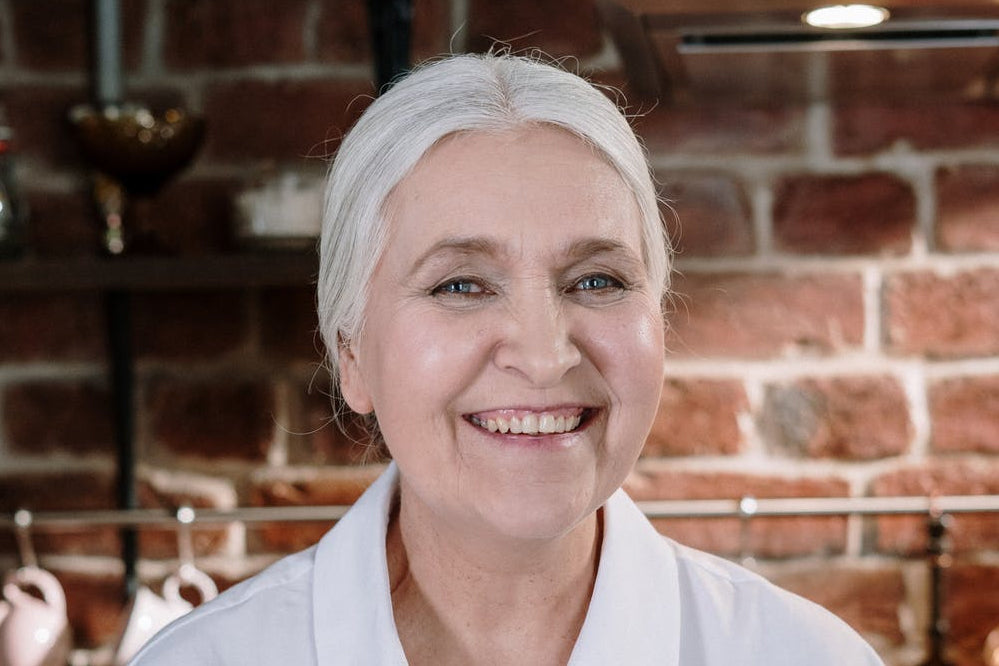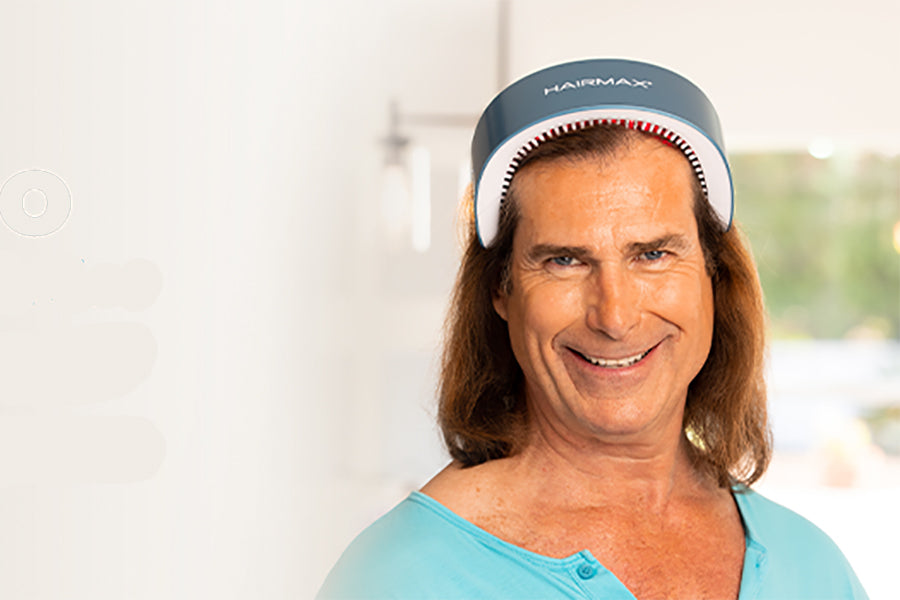The menopause is a natural part of ageing that usually occurs between 45 and 55 years of age, as a women’s oestrogen levels decline. During this time, the body goes through numerous physical changes as it adjusts to fluctuating hormone levels. Many women have unpleasant symptoms during menopause, including hot flashes, mood swings, and insomnia. Hair loss is another common occurrence.
Menopause and hair loss: what’s the connection?
Hair loss during or directly after menopause is typically as result of fluctuating hormone levels. Two main hormones are involved in hair growth: estrogen and testosterone. During menopause, levels of female hormones (estrogen) reduce, resulting in the effects of male hormones (androgen) becoming more prominent in the body, which causes hair follicles to thin and eventually fall out. Estrogen helps a woman’s hair to grow quickly and remain on the head longer before being shed – that’s why pregnant women boast thicker, fuller heads of hair – it’s all that estrogen! But a menopausal woman is losing estrogen, making it more difficult for her body to grow hair the same way it used to.
The Hair Growth Cycle
Hairs last about three to five years on our head, then fall out and get replaced with new hairs in a 3 to 4 month-long cycle. Each hair follicle is independent and goes through the growth cycle at different times, otherwise all your hair would fall out at once. The four stages in the hair growth cycle including the growing stage (anagen), the resting stage (telogen), the shedding stage (transitional) and the new hair growth phase (exogen).
How does the hair loss happen?
As estrogen works to keep the hair in the growing phase, the reduction in estrogen will cause the hair growth cycle to shorten and therefore the hair thins and sheds. You may also notice a reduction in the thickness (volume) of each hair strand. This is not immediate, but gradual. There may be recession at your frontal hairline and temples, or you might have increased hair shredding.
In menopause, there is also relatively higher levels of testosterone and specifically the active form of Dyhidrotestosterone (DHT). DHT attaches to the hair receptors stimulating more hair to enter the resting and falling (telogen) stage as opposed to growth (anagen) phase. It also makes the hair follicles themselves smaller, consequently hair is finer and hair loss occurs.
What can I do to prevent the hair loss?
In general, hair loss due to menopause is not permanent and can be reversed.
1. Reduce Stress
It’s important to keep your stress levels in check to prevent a hormonal imbalance. Reduced estrogen production can affect your brain chemistry and cause mood swings, anxiety, and depression. However, doing yoga and other breathing relaxation methods are especially effective in fighting menopausal symptoms. Exercising regularly can also help reduce stress.
2. Get Moving
Exercise is a key component of a healthy lifestyle. You’ll feel stronger and happier once you incorporate exercise into your daily routine. It also helps prevent some of the other symptoms of menopause, including mood swings, weight gain, and insomnia. All of these factors are important for maintaining hormonal balance, which promotes healthy hair growth. You may want to consider taking a walk with a friend, joining a gym, or going for a run.
3. Eat Well
Eating a balanced, low-fat diet is your best defence against hair loss. Make sure you include an adequate amount of whole grains, fruits, and vegetables in every meal. It’s also important to incorporate mono-saturated oils, such as olive oil and sesame oil, into your diet. Drinking green tea and taking vitamin B6 and folic acid supplements may help restore hair growth as well. Essential fatty acids also play a crucial role in maintaining hair health. These fatty acids can be found in the following foods:
• salmon
• tuna
• flaxseed oil
• walnuts
• almonds
4. Hydrate, Hydrate, Hydrate
Your body needs to be hydrated in order to function properly. Load up on H2O all day long and pass on juices, sodas, and other flavoured drinks that contain more sugar than your body needs. The amount of water needed varies from person to person and depends on various factors, including overall health and exercise intensity. As a general rule, however, you should aim to have eight 8-ounce glasses of water per day.
5. Keep It Natural
In order to prevent drying and breakage, it’s best to stay away from heat tools, such as hair dryers and straightening irons. Extensions and other styling methods can also weaken your hair and cause early hair loss. If you must dye your hair, choose an all-natural hair colour. Artificial chemicals found in dyes and perms can compromise your scalp and hair health. When you wash your hair, always use a nourishing conditioner to keep your scalp healthy and promote healthy hair growth.
6. Use Low Energy Laser Light Therapy
Laser devices that emit low-energy laser light stimulate hair growth to help fight thinning hair. The lasers work by using safe, nourishing low level laser light ENERGY to stimulate the hair follicles at a cellular level. This helps to promote hair growth and extend the hair’s natural growth cycle. The leader in laser hair growth technology is HairMax.
Summary
Adjusting to hair loss is challenging for most women. Menopausal hair loss can be upsetting and cause anxiety, but in general, is not permanent and can be reversed. With careful management of your health, your hair will regrow to be thicker and fuller.




Share:
Does a vitamin D deficiency cause hair loss?
Causes and Treatments for Female Pattern Hair Loss